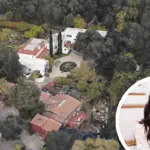In architecture, the push toward sustainability has become a central theme in conventional and unusual structures. While traditional buildings focus on efficiency and aesthetics, unique or strange buildings often present additional challenges and opportunities for incorporating green practices.
These iconic structures are visually striking and serve as beacons of innovative sustainable practices in the building industry. For those involved in constructing and maintaining such buildings in areas like Boulder, Colorado, understanding the integration of sustainable building materials and practices is critical. For a deeper look, insights into Boulder’s sustainable waste management can provide valuable context on how local efforts align with broader environmental goals.
Sustainable Materials Function as a Crucial Component of the Unusual Architecture
The building aimed at a unique approach that could be achieved only with the help of nonstandard architecture. Often, these structures are not conventional shapes and are made from “strange materials.” architects and builders have to use their creative side and think about how sustainable the construction is. On this matter, the right material choice plays a key role. Green building material is a component that can negate almost the total effect on the environment. These materials include recycled steel, bamboo, reclaimed wood, and glass. They reduce the adverse effects of the environment as well as create some functional and aesthetic benefits.
To illustrate, bamboo is recognized for its unique strength and flexibility, and these two characteristics are ideal for constructions that may need curved forms- a factor that most art designs demand today. The same can be highlighted through recycled glass, which reduces the building’s carbon footprint and enriches the building’s visual appeal with multi-colored, light-reflecting facades. Naturally, in Boulder, where environmental awareness is the main thing, this isn’t just a preferred option but an expected one in fresh architectural epochs.

Fine-tuned Waste Management in Construction
Construction waste management is the balance of the other sustainability aspects of building unusual structures. Conventional construction projects allowed vast amounts of garbage into the world, which would be put in landfills. Nevertheless, inventive waste management methods, like divided sorting and recycling of demolition waste on-site, cut the output of such waste by many folds. Efficient shipments of recyclable stuff from construction sites in an urban area such as Boulder, where environmental values are highly held, are critical to the specialized services responsible for removing and recycling.
In the case of odd-looking buildings, it can be challenging to deal with waste management as the non-standard buildings are made of non-standard materials in the first place. Solutions adjusted to each project’s waste requirements are highly beneficial, and sometimes, the need is to care for the conservation of a project and the environment. Contractors with local waste management services can apply the tailored solutions of this company and make sure the highest quality recycling is achieved. Thus, a less harmful effect would be caused on the environment.
Green building development practices encourage economically and ecologically sustainable construction of these unique and famous buildings. Additionally, they reduce the ecological footprint of these constructions. This type of building project conforms to the community’s set standards and regulations, which deploy sustainable and regulatory measures in both houses and commercial establishments.
Conclusion
The architecture of unordinary buildings sets up an exceptionally vivid platform for exploring and innovating more sustainable building techniques. Innovative materials are constantly employed in construction projects to lower dependence on non-renewable resources. Advanced waste management strategies are used to recycle as much waste as possible and minimize landfill use. These structures are, therefore, beacons of environmental consciousness.
With the increase in the quest for renewable and sustainably built structures, these practices will be developed as they become an essential component of modern construction. Boulder, one of the cities with a robust environmental mindset, is leading the revolution in this sphere, proving that the leading role of the relevant sector at all levels is a critical aspect of ensuring sustainable development.
The continuity of such an approach will not only guarantee the preservation of the natural beauty and integrity of the region but also become a standard of what is good for the environment and appearance in the architectural plan of the future.





